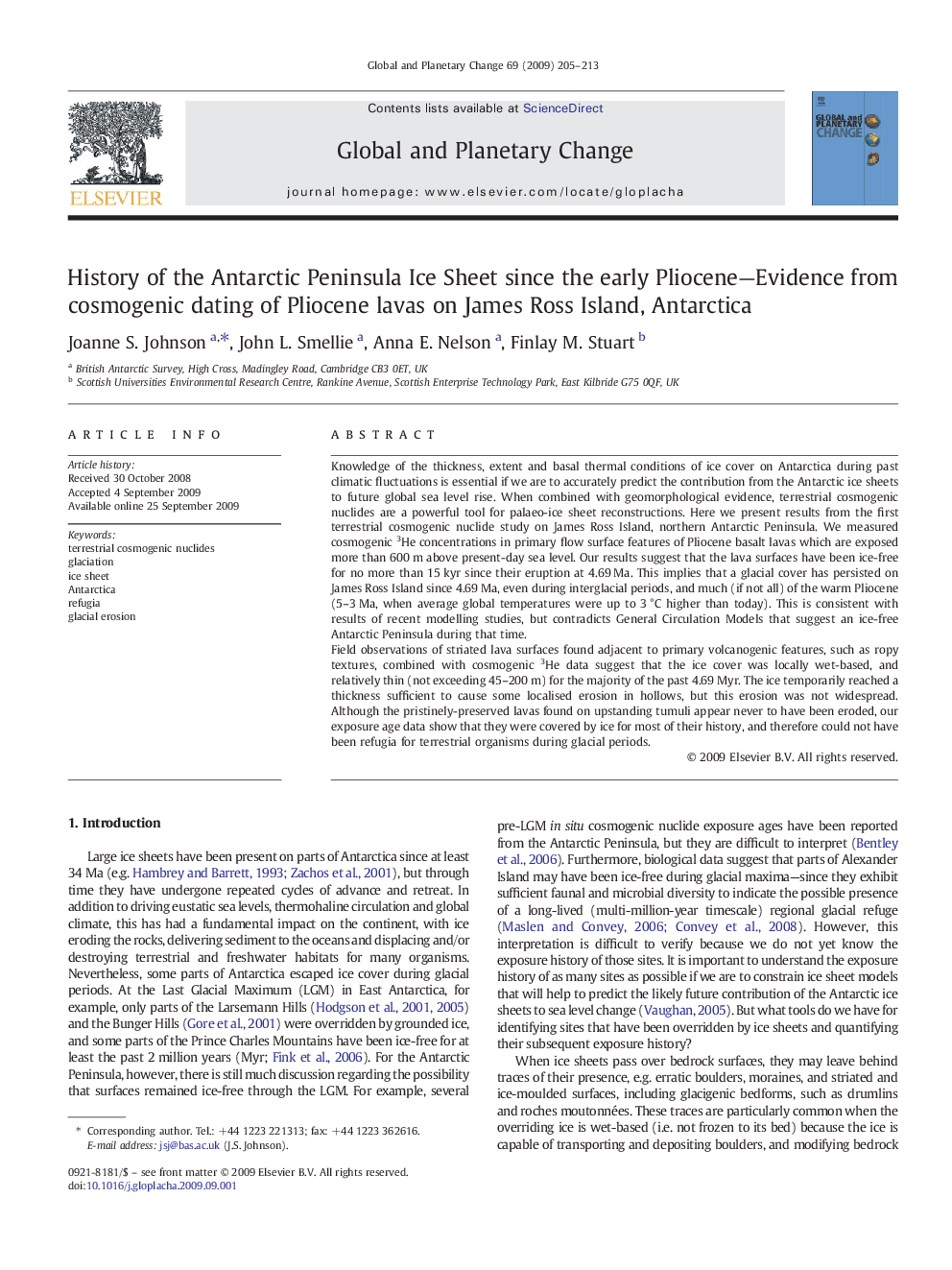| کد مقاله | کد نشریه | سال انتشار | مقاله انگلیسی | نسخه تمام متن |
|---|---|---|---|---|
| 4464013 | 1313698 | 2009 | 9 صفحه PDF | دانلود رایگان |

Knowledge of the thickness, extent and basal thermal conditions of ice cover on Antarctica during past climatic fluctuations is essential if we are to accurately predict the contribution from the Antarctic ice sheets to future global sea level rise. When combined with geomorphological evidence, terrestrial cosmogenic nuclides are a powerful tool for palaeo-ice sheet reconstructions. Here we present results from the first terrestrial cosmogenic nuclide study on James Ross Island, northern Antarctic Peninsula. We measured cosmogenic 3He concentrations in primary flow surface features of Pliocene basalt lavas which are exposed more than 600 m above present-day sea level. Our results suggest that the lava surfaces have been ice-free for no more than 15 kyr since their eruption at 4.69 Ma. This implies that a glacial cover has persisted on James Ross Island since 4.69 Ma, even during interglacial periods, and much (if not all) of the warm Pliocene (5–3 Ma, when average global temperatures were up to 3 °C higher than today). This is consistent with results of recent modelling studies, but contradicts General Circulation Models that suggest an ice-free Antarctic Peninsula during that time.Field observations of striated lava surfaces found adjacent to primary volcanogenic features, such as ropy textures, combined with cosmogenic 3He data suggest that the ice cover was locally wet-based, and relatively thin (not exceeding 45–200 m) for the majority of the past 4.69 Myr. The ice temporarily reached a thickness sufficient to cause some localised erosion in hollows, but this erosion was not widespread. Although the pristinely-preserved lavas found on upstanding tumuli appear never to have been eroded, our exposure age data show that they were covered by ice for most of their history, and therefore could not have been refugia for terrestrial organisms during glacial periods.
Journal: Global and Planetary Change - Volume 69, Issue 4, December 2009, Pages 205–213